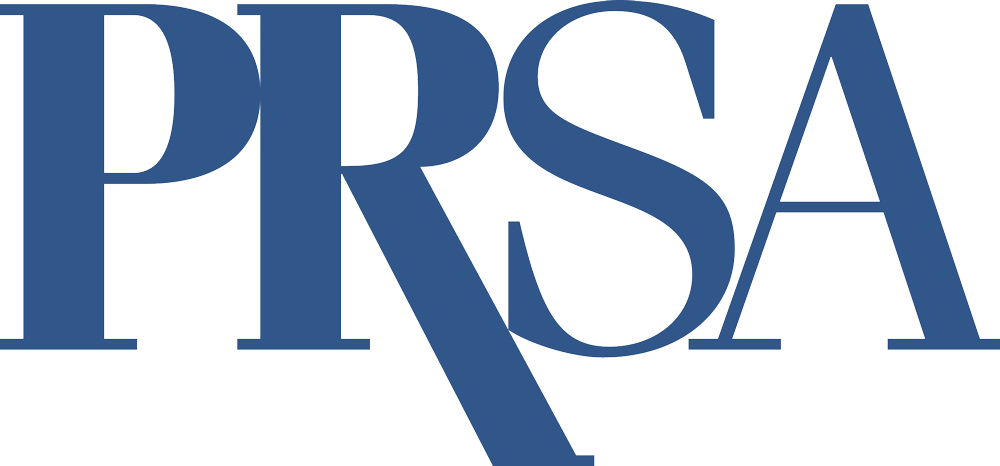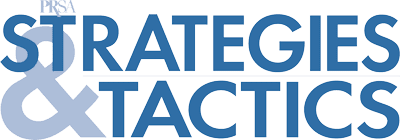Crisis of Well-Being: Why PR Pros Need Support
By Katie Neal
May 2025
One of my clients, a senior executive at a global PR agency, recently told me she had become ill — and admitted that, in a way, it was nice. It forced her to take a break.
But not really. She was still working on a new business pitch, pushing through with a fever and a laundry list of symptoms.
She appeared resigned to the situation, and I listened with empathy. After all, I’d been in similar shoes before — actually, an orthopedic boot. After getting an X-ray that revealed a broken ankle one morning, I spent the afternoon and evening engaged in crisis communications. Just a day earlier, I had limped through two airports on that same fractured leg while returning home from a business trip.
What are we doing — as an industry and as professionals? Why must we literally break ourselves just to justify a break?
It isn’t surprising that 91% of PR professionals reported poor mental health in the past year, according to a survey conducted by the Public Relations and Communications Association and the Chartered Institute of Public Relations.
The profession is functioning in a continuous state of whiplash. The political climate and economic uncertainty have created a tense environment — clients are tightening budgets, jobs feel precarious, and providing sound PR counsel is more complex than ever. Agency leaders aren’t immune to this pressure either. Many are navigating the same uncertainty while being tasked with maintaining margins and keeping teams afloat.
But that doesn’t change the reality: The big-agency model, where productivity equals worth, traps many in a relentless cycle. And without meaningful change, burnout will only get worse.
So, how do we set boundaries that protect well-being and promote professional growth — without ignoring the real pressures at play?
Here are key actions corporate and agency leaders must stop, start and continue doing to empower their employees, enhance their effectiveness and ensure that they remain motivated, supported and equipped to thrive in today’s challenging environment.
Stop measuring commitment by sacrifice.
The culture of working through illness or vacation, which is often seen as dedication, must stop.
Another client, a senior comms leader at a tech giant, had her first day off since the holidays. She was in New York following a successful work event her team spearheaded. Instead of enjoying her Friday night on Broadway with her partner and friends as planned, she spent the evening — and the entire weekend — crafting a reorganization rollout plan. Another senior executive dropped the news on her after the event, and the plan had to be communicated on Monday, of course.
Before you even say, “she should have pushed back,” the reality is that not all cultures operate this way. (Though they should!) As communications professionals, we expect periods of hustle and know things will occur at times that require us to drop everything. But waiting on something this massive and expecting anyone to sacrifice all plans is not a way to build trust, create loyalty or inspire the best work.
According to a 2024 survey from The Plank Center for Leadership in Public Relations, communication professionals working for empathic leaders report higher organizational commitment, better mental health and lower turnover intentions.
Neither of these clients is a better professional because they powered through illness or planned time off. They are both, however, keeping their eyes open for opportunities that reward their professional expertise and their need for a personal life.
Start prioritizing sustainable performance over perpetual hustle.
According to a MuckRack survey, 75% of PR professionals who work in agencies report high stress and most commonly report stress levels at an 8 out of 10.
Obviously, my client who was happy to get sick was in the latter stages of burnout. Corporate leaders need to normalize rest and recovery to prevent burnout instead of pushing hardworking and experienced professionals to their mental and physical breaking point.
What does that look like in practice? Encouraging people to use all their PTO. Not contacting them on their vacations. Only reaching out when they’re sick to ask if there’s anything they need, not if they are feeling well enough to update a few slides. If your broken business model doesn’t allow for such flexibility in capacity, then it’s also breaking your people. You need to consider alternative resourcing models, such as fractional support or contractor networks, immediately.
According to most of my agency clients, gone are the days when we took a breather after a big project or accomplishment. Even when they have an hour of downtime, they often feel guilt and shame for taking a walk — a healthy practice known to boost mental health, renew the senses and spark creativity — and instead accomplish nothing while staring at their desks.
Outcome-based performance metrics rather than billable hours or time spent online would be a much more effective way to motivate, engage and reward top talent.
Continue strategically investing in talent.
Working 24/7 and always being “on” cannot be the norm or the expectation. It doesn’t bring out the best in people — but it will push them out the door. Retention is far more cost-effective than constant churn, so how can you make staying worthwhile for your employees and the long-term health of your business?
Start with something simple but powerful: Talk to your people. Research from The Plank Center shows that engaged and empathetic leadership directly improves workplace engagement. That means having regular one-on-ones, not just meeting when there’s a problem. In those conversations, ask what support would truly be helpful in that moment, then act on that insight. Small changes in communication can have a big impact on retention, especially when you show you genuinely care.
Additionally, continue professional development investments, but ensure they align with what employees need, not just agency or corporate prestige. Beyond traditional conferences, agencies should explore alternative professional development opportunities, like coaching or peer mentorship programs for talent they want to keep and develop.
For example, a $5,000 professional development budget could fund several months of leadership coaching, offering tailored support, lasting impact and more measurable ROI compared to a single conference.
Finally, recognize that rest is a performance strategy, not a luxury. Early-career employees, in particular, are more likely to practice what they see modeled for them. Don’t just tell them, show them that it’s important to step away and recharge. Being the last one online or always on-call isn’t a flex — it’s a problem. The work is always there when we return, and sometimes a well-deserved break is all it takes to gain a fresh perspective.
Where do we go from here?
The pressures facing PR pros make it seem like the industry is at a breaking point, but it doesn’t have to be. Leaders have the power to fix what’s broken, and professionals have the power to advocate for themselves. But change won’t happen in a vacuum.
Cultural shifts, smart business decisions and coaching can be part of the solution. If this resonates with you, then let’s talk. What needs to shift in the way agencies operate? What changes would make this industry more sustainable? Whether you’re a leader seeking new approaches or a professional navigating these pressures, I’d love to continue the conversation with you, your colleagues, your leadership team, your PRSA Chapter and your peers.
In the meantime, what will you start, stop or continue today — before you, too, find yourself feeling relieved about getting sick?



